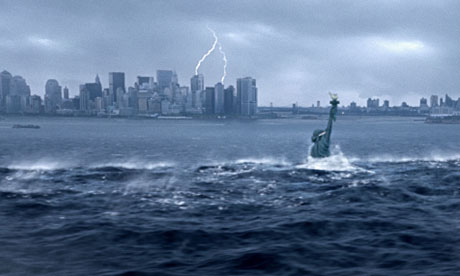A new analysis to be presented next week at the American Geophysical Union's Fall Meeting in San Francisco says that extreme climate and weather events such as record high temperatures, intense downpours and severe storm surges are more common in many parts of the world.
It's hard to be sure. High quality weather records only go back about 30 years and even suspect quality records only go back 100, so there is inference between modern record-keeping and the data trapped in tree rings and ice cores from ancient times.
The Intergovernmental Panel on Climate Change (IPCC), stung by unsubstantiated claims of melting Himalayas and African food declines, has asked journalists and researchers not to try and attribute local weather events to climate change, but Noah Diffenbaugh, an associate professor of environmental Earth system science at Stanford University, believes weather events are more extreme than any other event in the historical record.

To many journalists last decade, this was science and climate scientists were happy to play along. But now politicians are jaded and the public is suffering Green Fatigue. How much of real weather events can actually be due to climate change? Credit: "The Day After Tomorrow"
"The media are often focused on whether global warming caused a particular event," says Diffenbaugh, who is a senior fellow at the Stanford Woods Institute for the Environment. "The more useful question for real-world decisions is: 'Is the probability of a particular event statistically different now compared with a climate without human influence?'"
His belief is based on three elements of varying rigor: climate observations, climate computer simulations which estimate variations in climate and statistics to reconcile the first two.
The first challenge involves having just a few decades or a century of high-quality weather data with which to make sense of events that might occur once every 1,000 or 10,000 years in a theoretical climate without human influence. Numerical models have gotten much better from the sloppy 'hockey stick' days but are still limited by the fuzzy area between ancient data and modern records. Statistics are always difficult and get the most skepticism because of the highly political nature of the modern earth science community.
But decision makers need to appreciate the influence of global warming on extreme climate and weather events.
"If we look over the last decade in the United States, there have been more than 70 events that have each caused at least $1 billion in damage, and a number of those have been considerably more costly," said Diffenbaugh. "Understanding whether the probability of those high-impact events has changed can help us to plan for future extreme events, and to value the costs and benefits of avoiding future global warming."






Comments